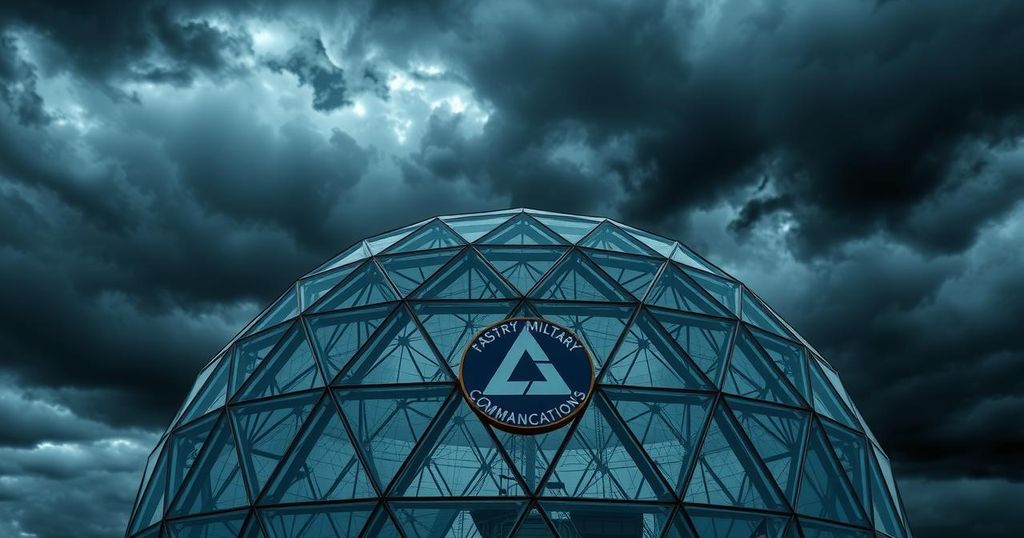Hurricane Milton: Catastrophic Storm Surge Expected for Florida’s West Coast
Hurricane Milton, a rapidly intensifying major hurricane, is set to impact Florida’s west coast with unprecedented storm surge forecasts of up to 12 feet, particularly affecting areas from Venice to Tarpon Springs. The storm threatens to bring the worst surge to Tampa Bay seen in over a century, and the risk of significant flooding highlights the critical need for preparedness as it approaches landfall.
Hurricane Milton has rapidly strengthened into a major hurricane over the southern Gulf of Mexico, posing a severe risk to Florida’s west coast, which is still recovering from Hurricane Helene’s recent devastation. The National Hurricane Center forecasts up to 12 feet of catastrophic storm surge affecting regions from Venice to Tarpon Springs, marking an unprecedented surge warning for the Tampa Bay area. Florida’s Sun Coast, including areas like Treasure Island that recently experienced significant flood surges from Hurricane Helene, now faces forecasted surge levels that could reach nearly double that of the previous storm. Should Milton’s center approach or move north of Tampa Bay, it could deliver the worst storm surge in over a century. Due to the inherent uncertainties in hurricane tracking, even small deviations in Milton’s path can lead to drastic differences in storm surge impacts. The average error in forecasting paths 12 to 24 hours before landfall consistently ranges from 20 to 40 miles, and the geographical layout of Florida complicates these forecasts further. Storm surge, historically the primary cause of hurricane-related fatalities, prompts evacuations along vulnerable coastal regions. A storm surge watch currently encompasses Florida’s entire west coast up to Cedar Key, with local authorities urging residents in flood-prone areas to evacuate just a few miles inland to seek higher ground. As for Hurricane Milton itself, the storm is undergoing explosive strengthening and is expected to reach or maintain Category 5 intensity by Tuesday morning. While Category 4 and 5 hurricanes are uncommon later in the Atlantic hurricane season, Milton’s potential steady strength indicates that even a decrease in maximum wind speeds as it approaches the shore will not significantly diminish its threat. Instead, increased storm size resulting from upper-level winds could widen the affected area, leading to broader storm surge impacts as the hurricane progresses inland. Damaging winds are anticipated in areas north of Lake Okeechobee and along the I-4 corridor between Tampa and Daytona Beach. Forecast models suggest a range of potential inland landfalls between Fort Myers and Cedar Key, with anticipated storm surges affecting northeast Florida as Milton transitions into the Atlantic on Thursday. Furthermore, South Florida has seen significant rainfall amounts, with projections indicating continued heavy downpours leading to potential flooding. Notably, the month of October has been marked by a unique occurrence, with three concurrent hurricanes—Milton, Leslie, and Kirk—active in the Atlantic, a phenomenon not previously recorded.
The article discusses Hurricane Milton’s rapid intensification into a major hurricane and its impending impact on Florida’s west coast, which has recently faced another storm, Hurricane Helene. The National Hurricane Center’s alarming forecasts regarding storm surge levels are highlighted, emphasizing the historic nature of such predictions for the Tampa Bay region. Significant attention is brought to the importance of accurate hurricane tracking due to potential impacts on local flooding and fatalities due to storm surge, which historically has been the deadliest aspect of hurricanes. The article also presents information about the ongoing weather events, including rainfall across South Florida and the simultaneous presence of three hurricanes in the Atlantic, providing context for the severe situation at hand.
In conclusion, Hurricane Milton represents a significant threat to Florida’s west coast, with unprecedented storm surge forecasts and potential for devastating flooding. As the storm strengthens and approaches landfall, residents in vulnerable areas must remain vigilant and heed warnings from local authorities. The risks associated with storm surge and heavy rainfall underscore the importance of this hurricane event, especially in light of previous storms hitting the region. The presence of multiple active hurricanes in the Atlantic further emphasizes the unusual intensity of the current weather patterns and the need for preparedness and rapid response mechanisms.
Original Source: www.local10.com




Post Comment